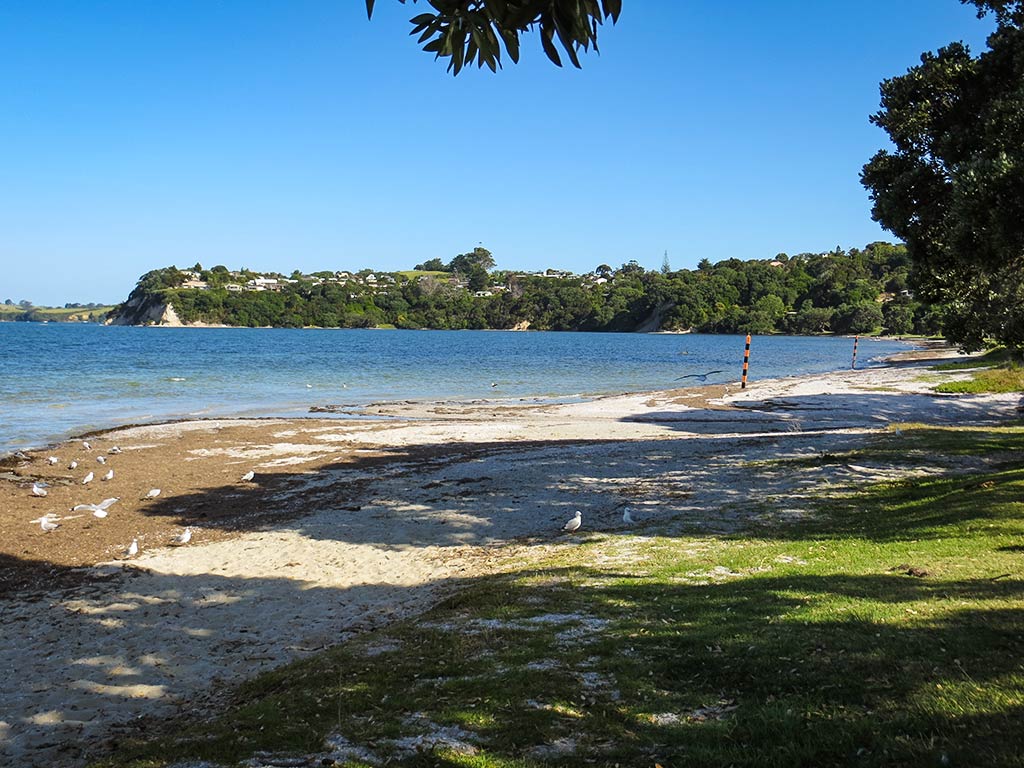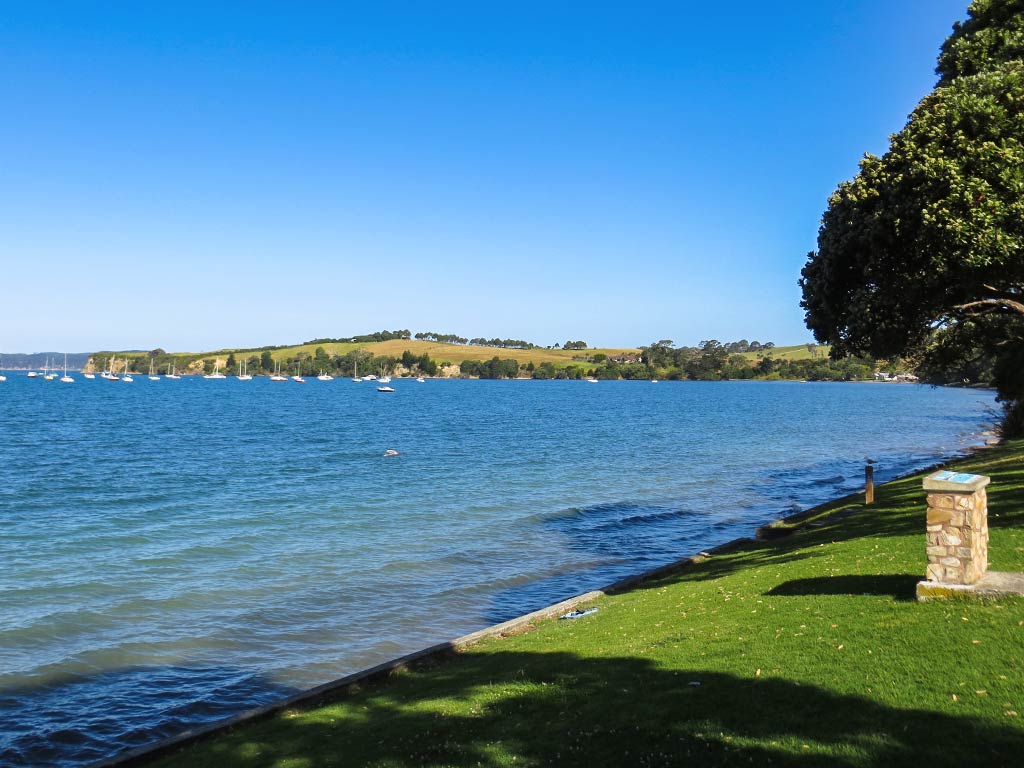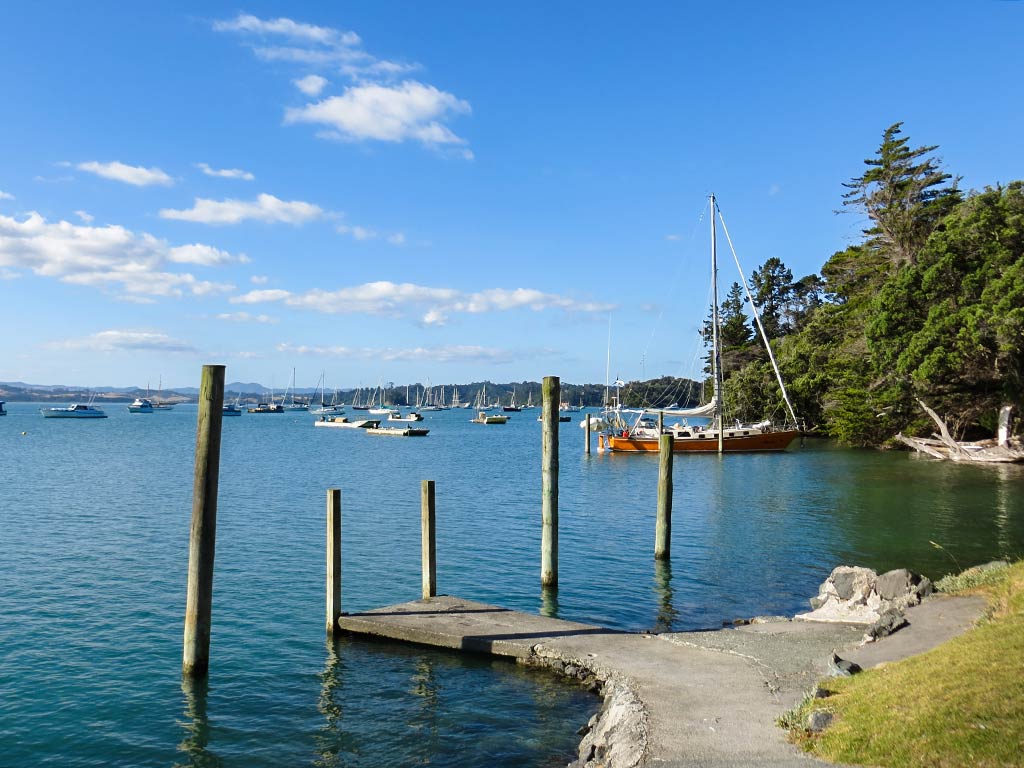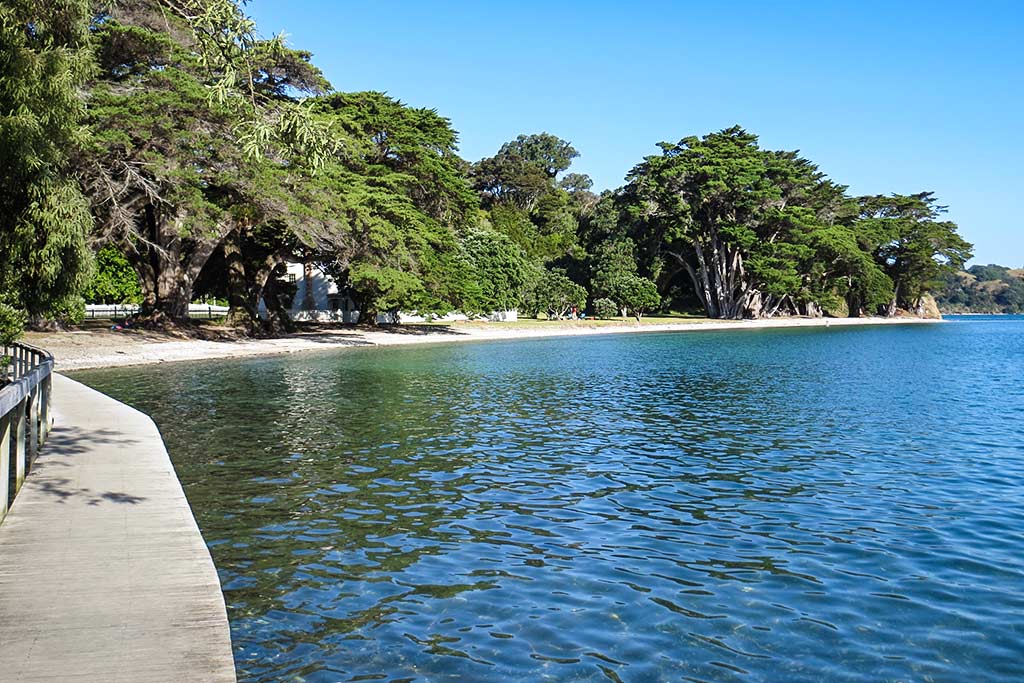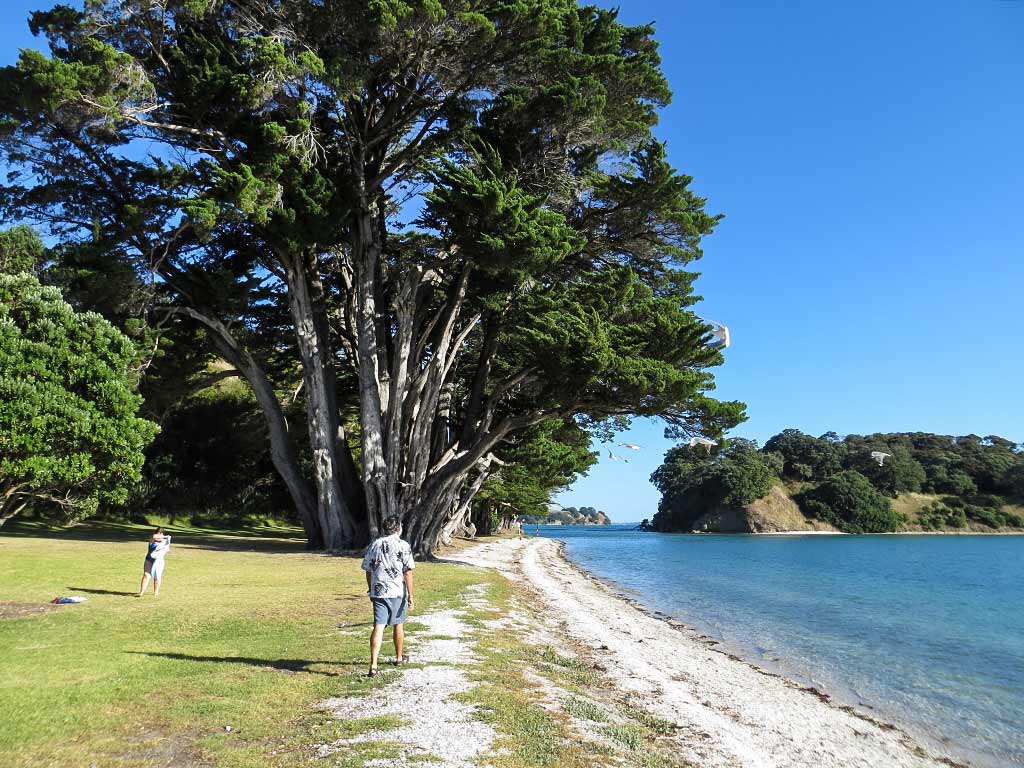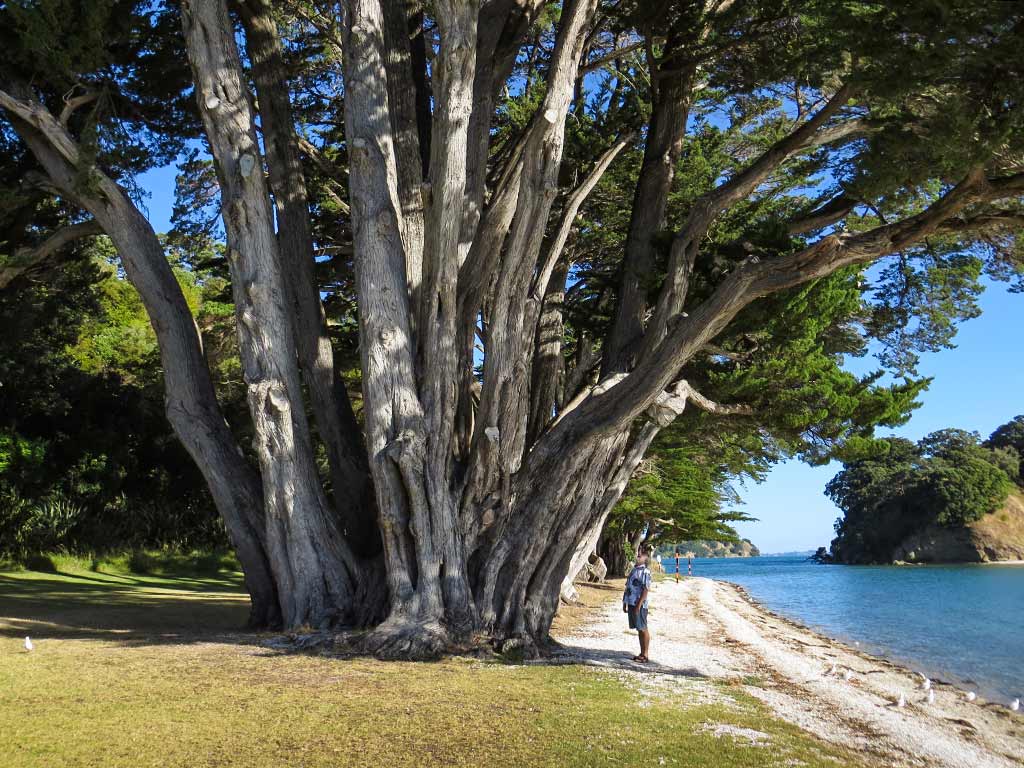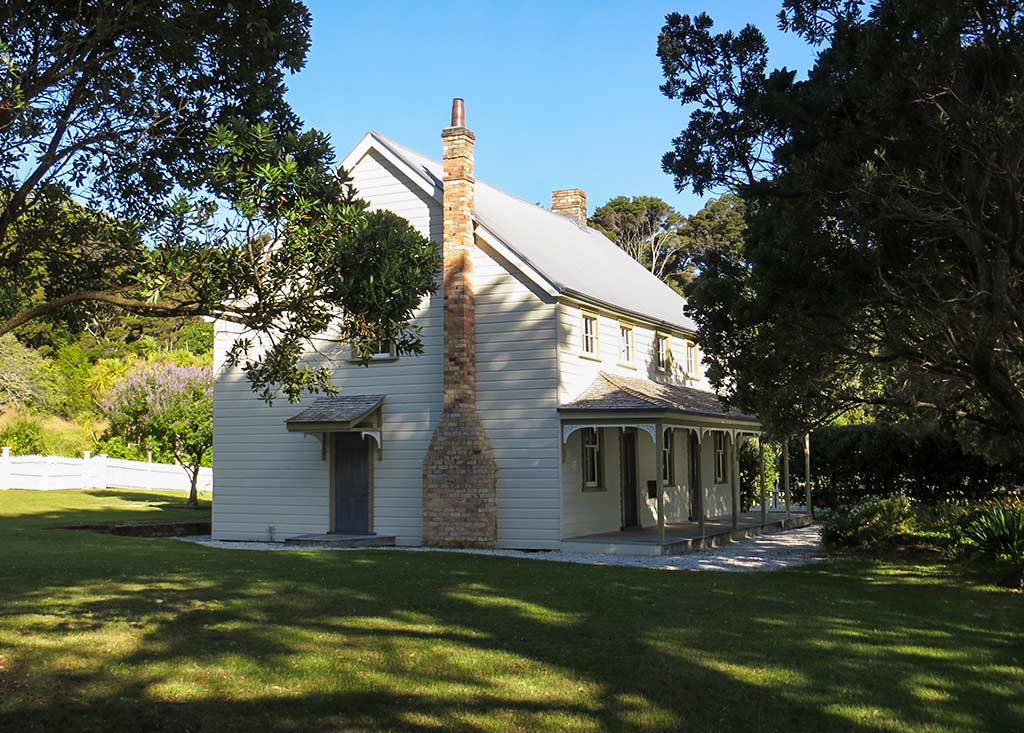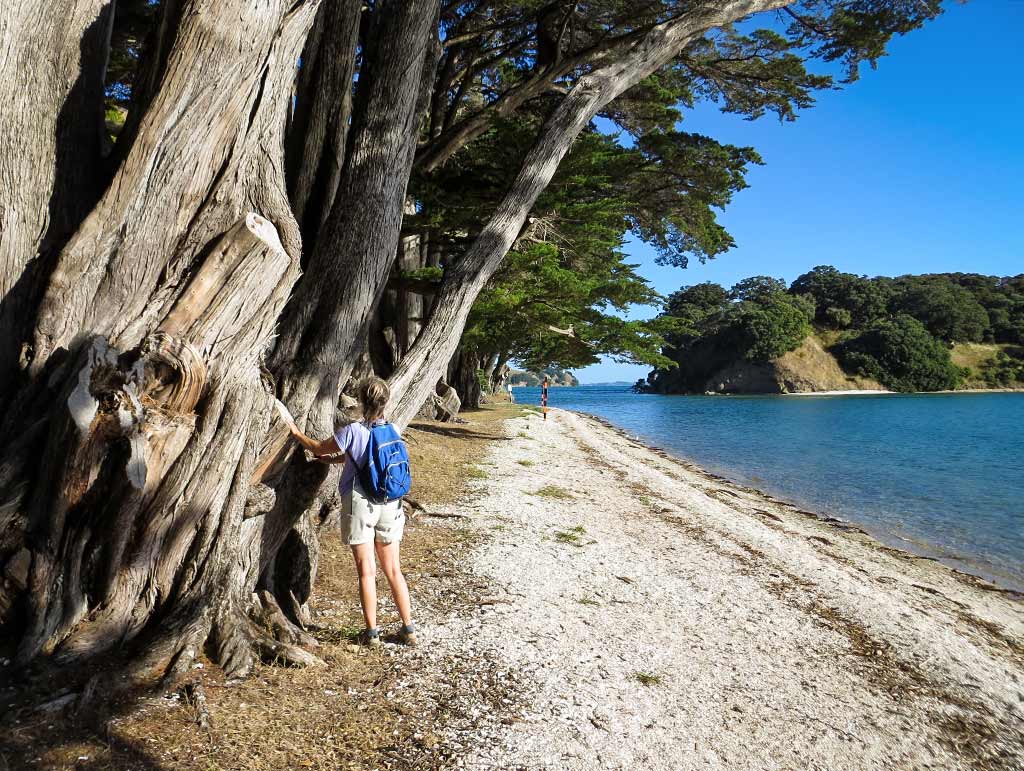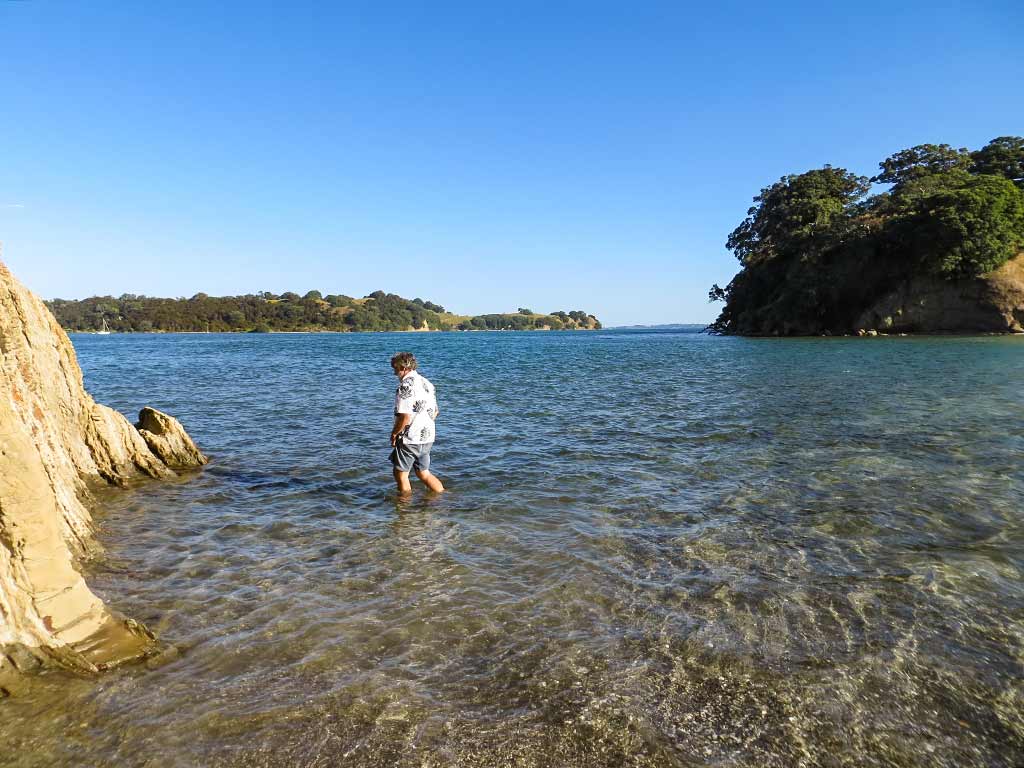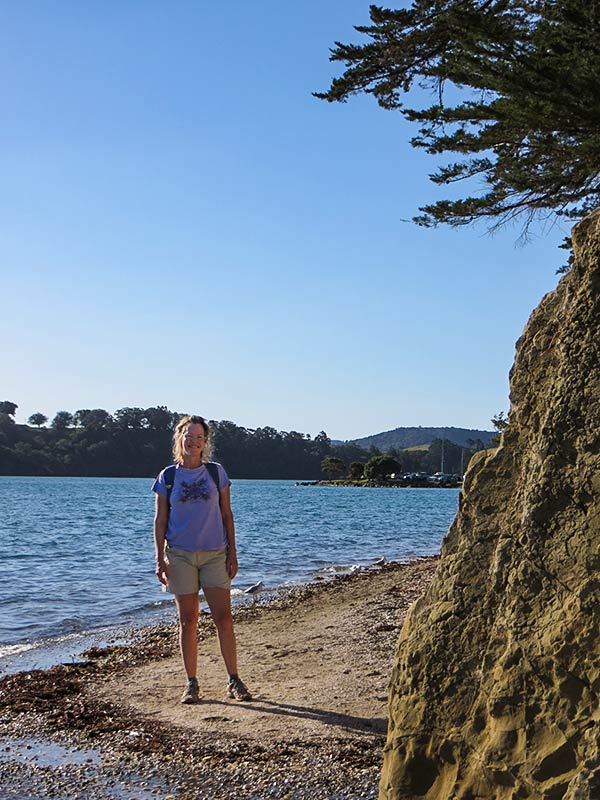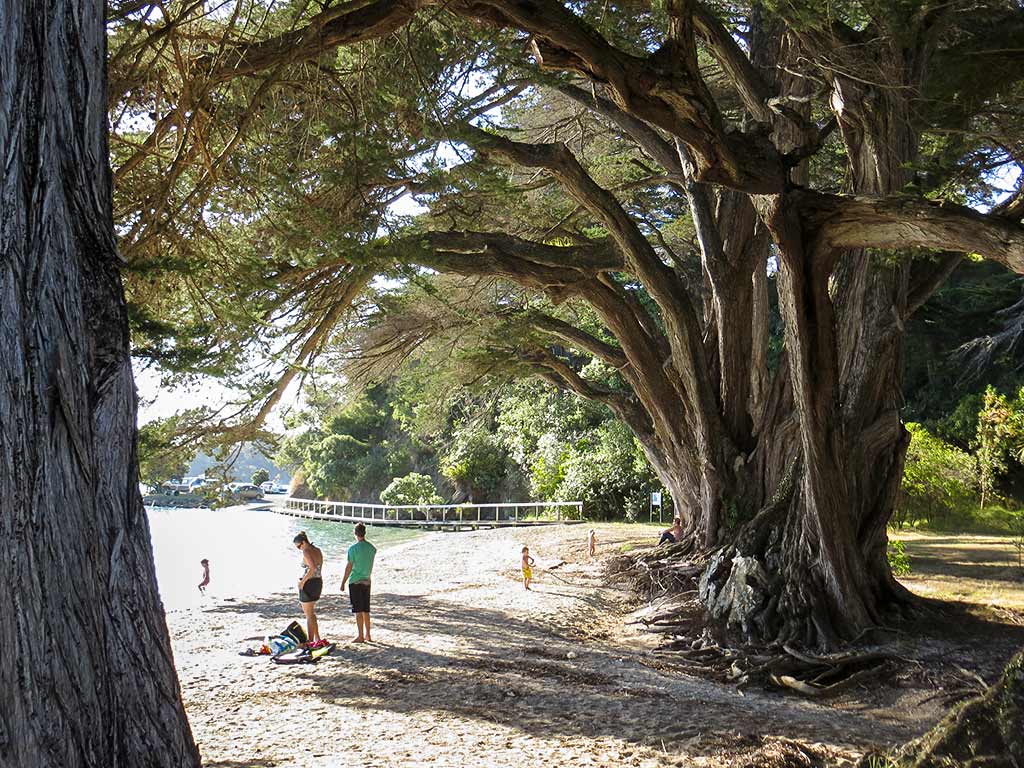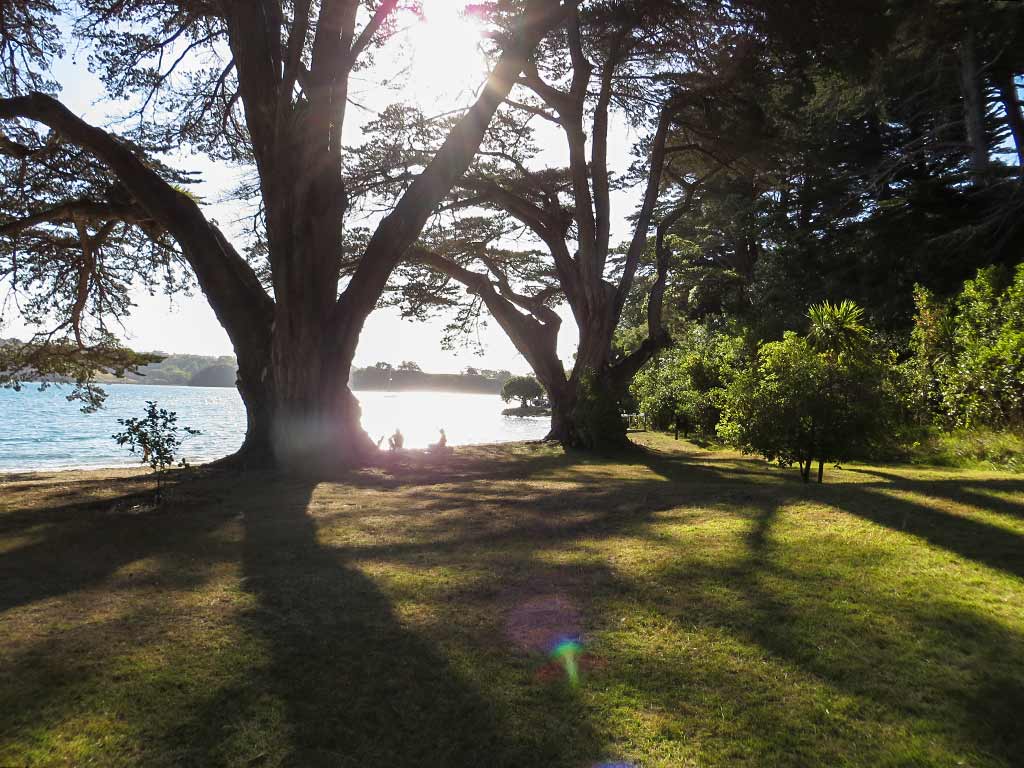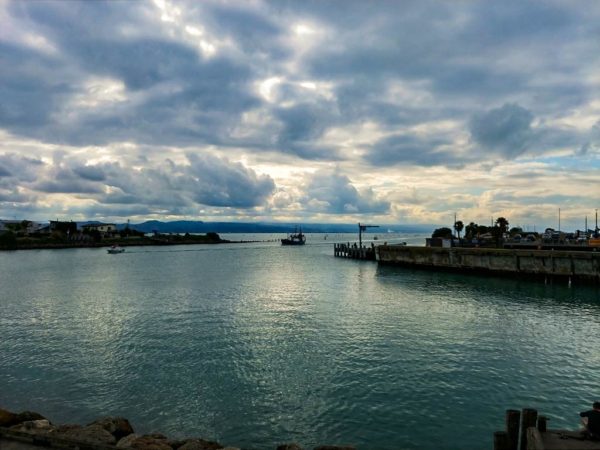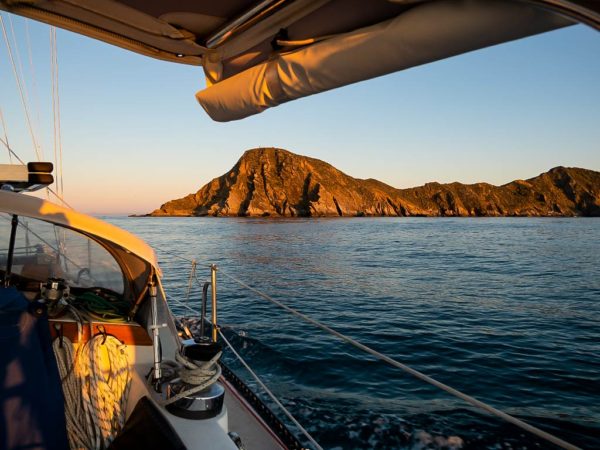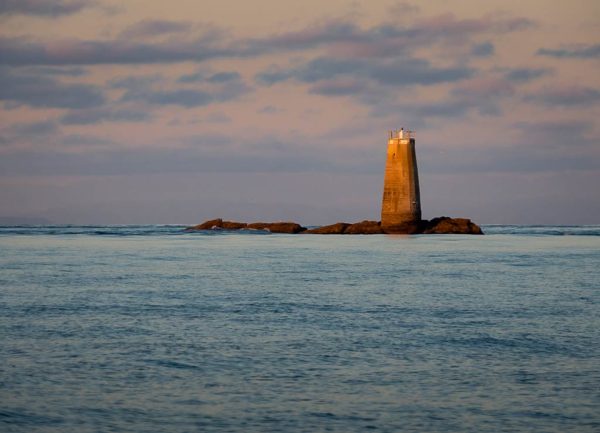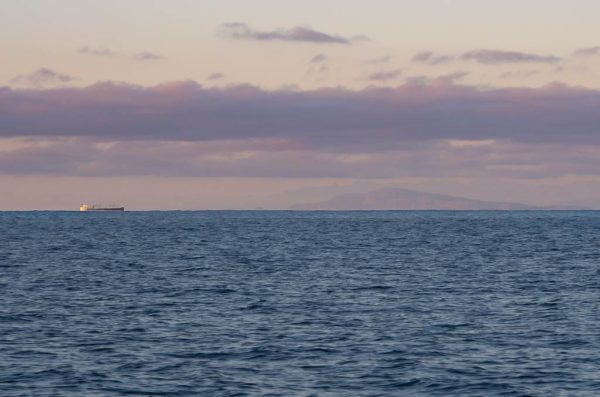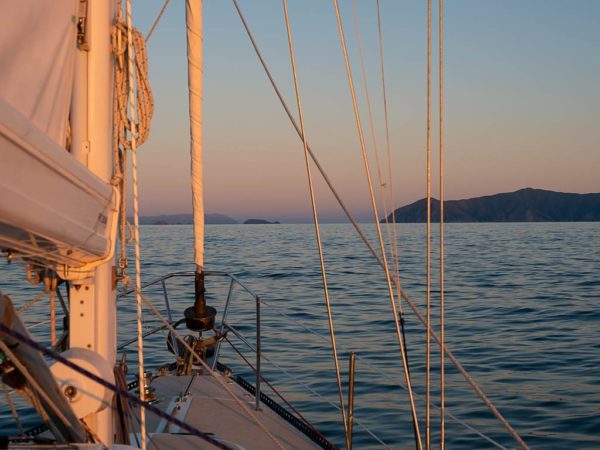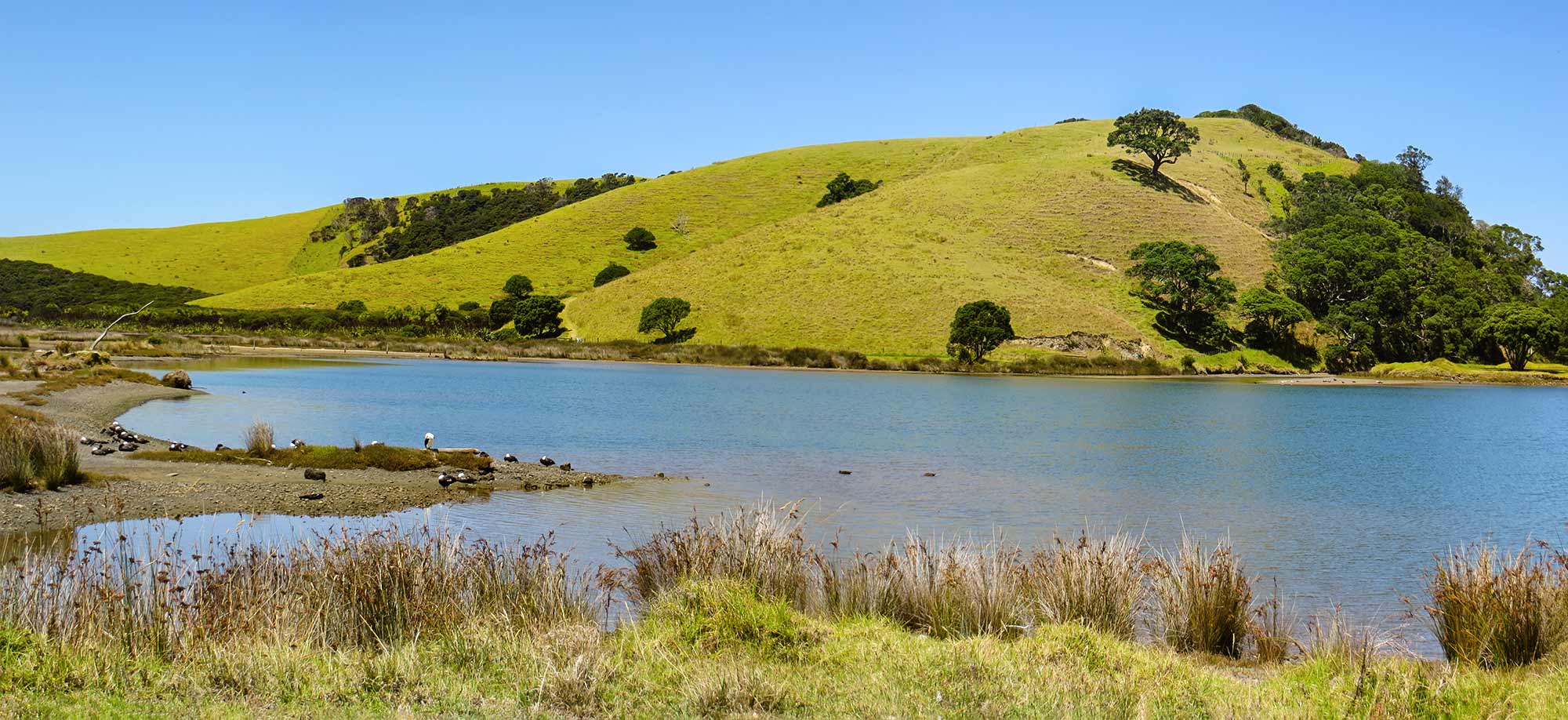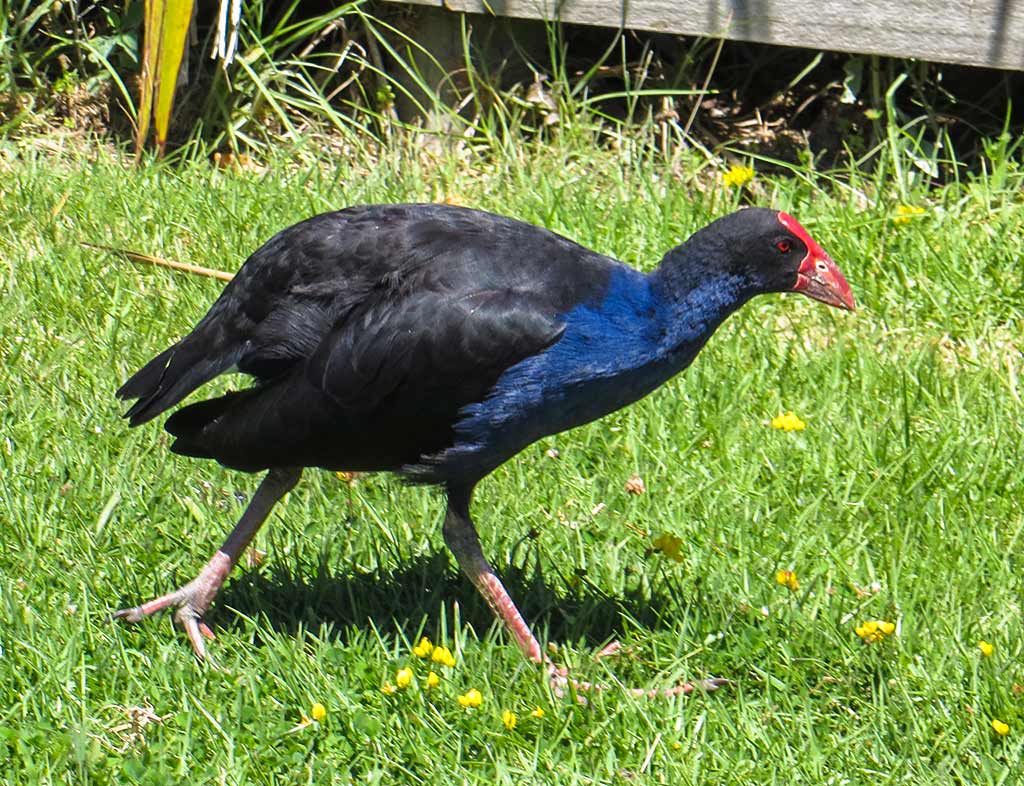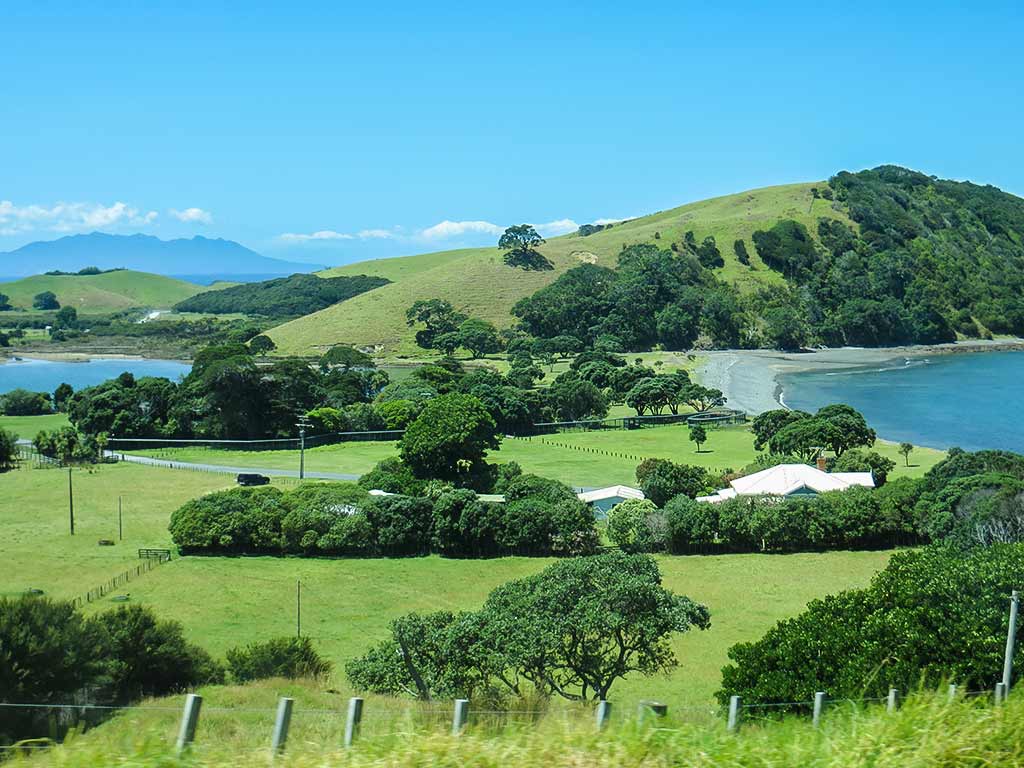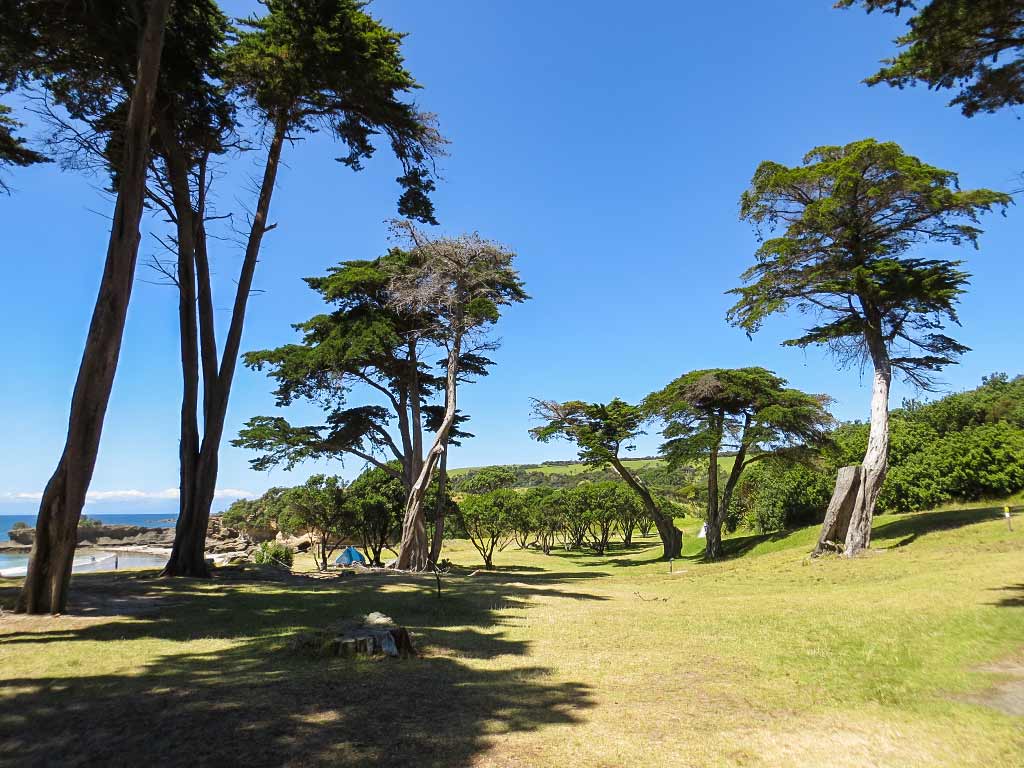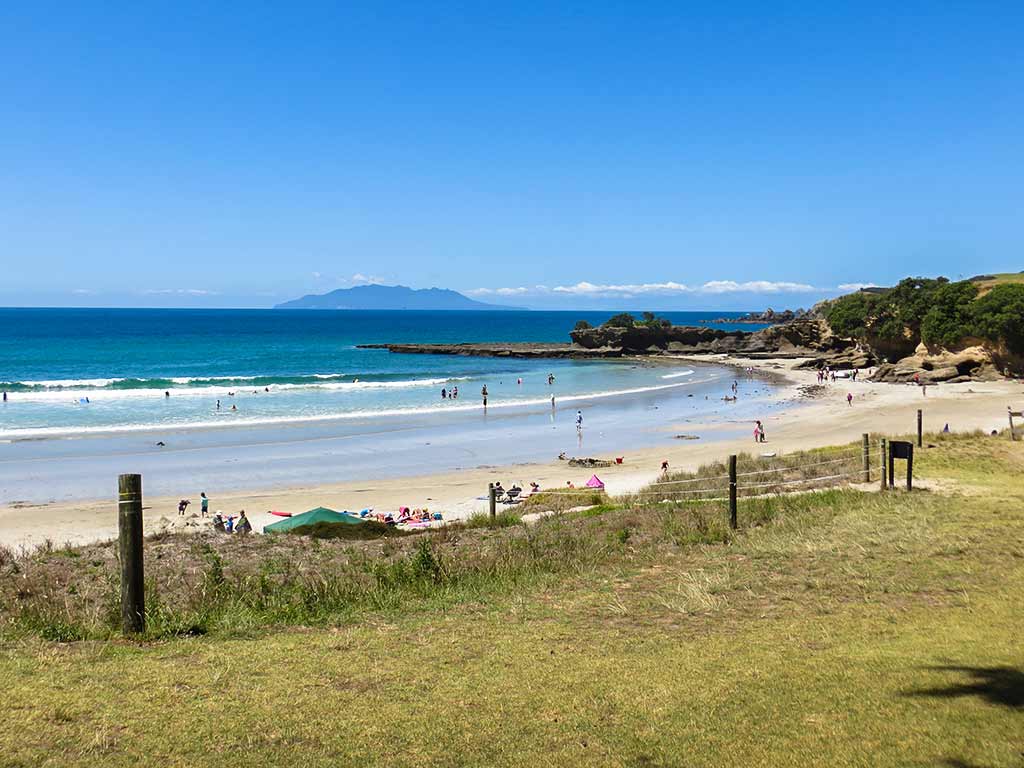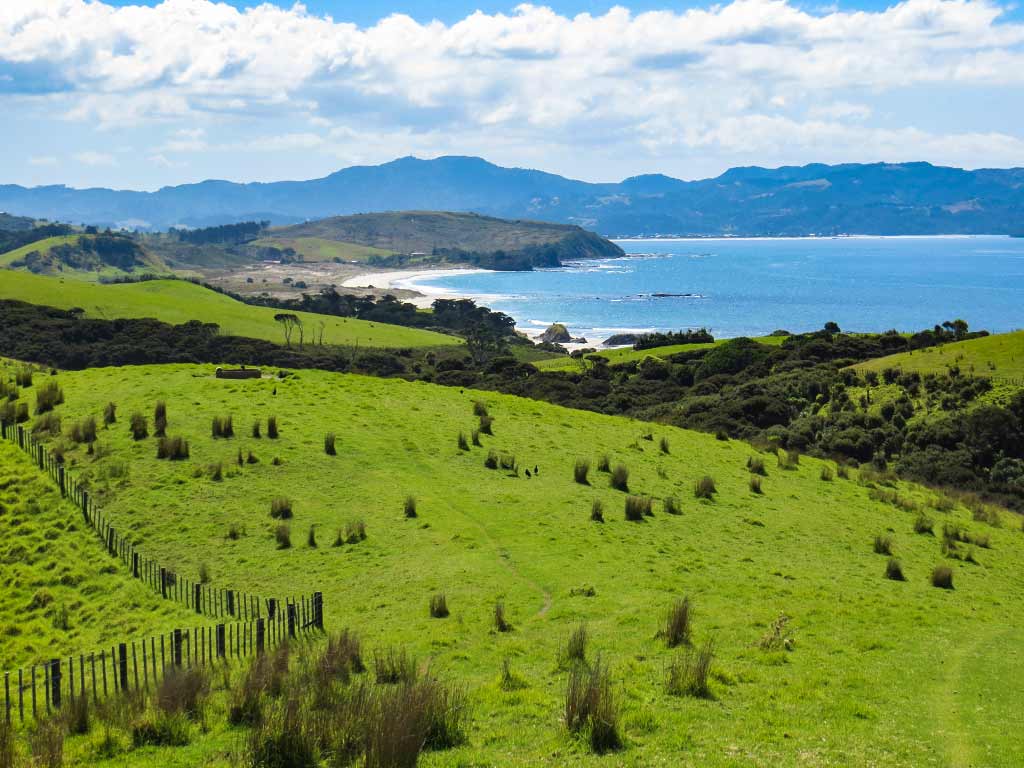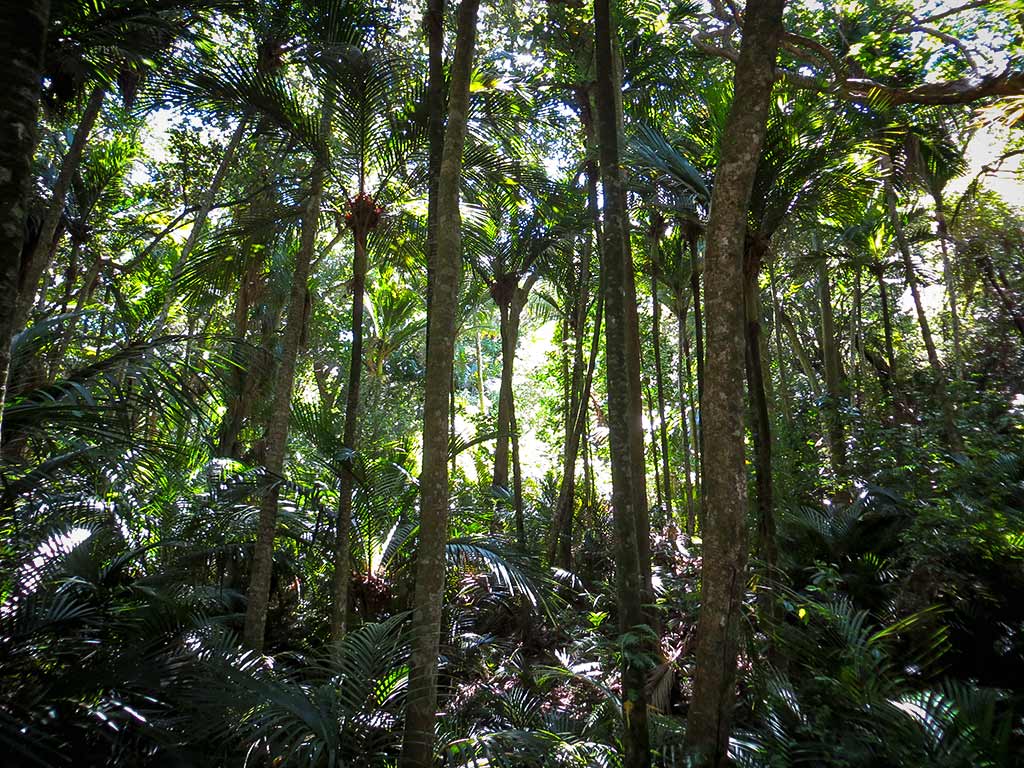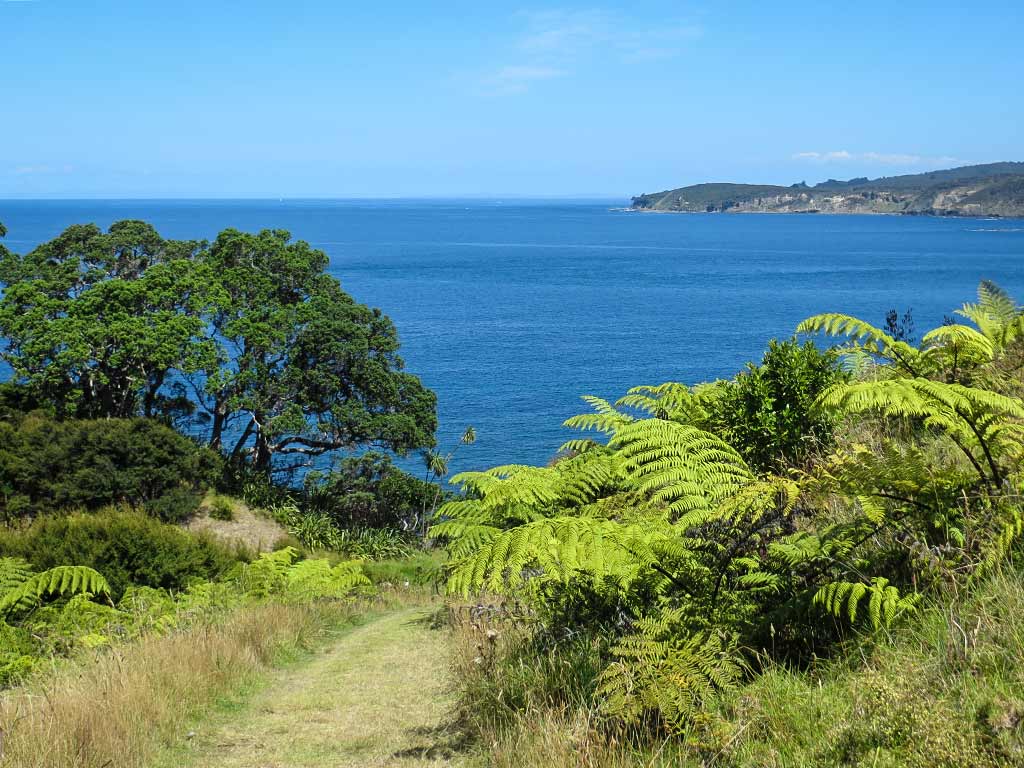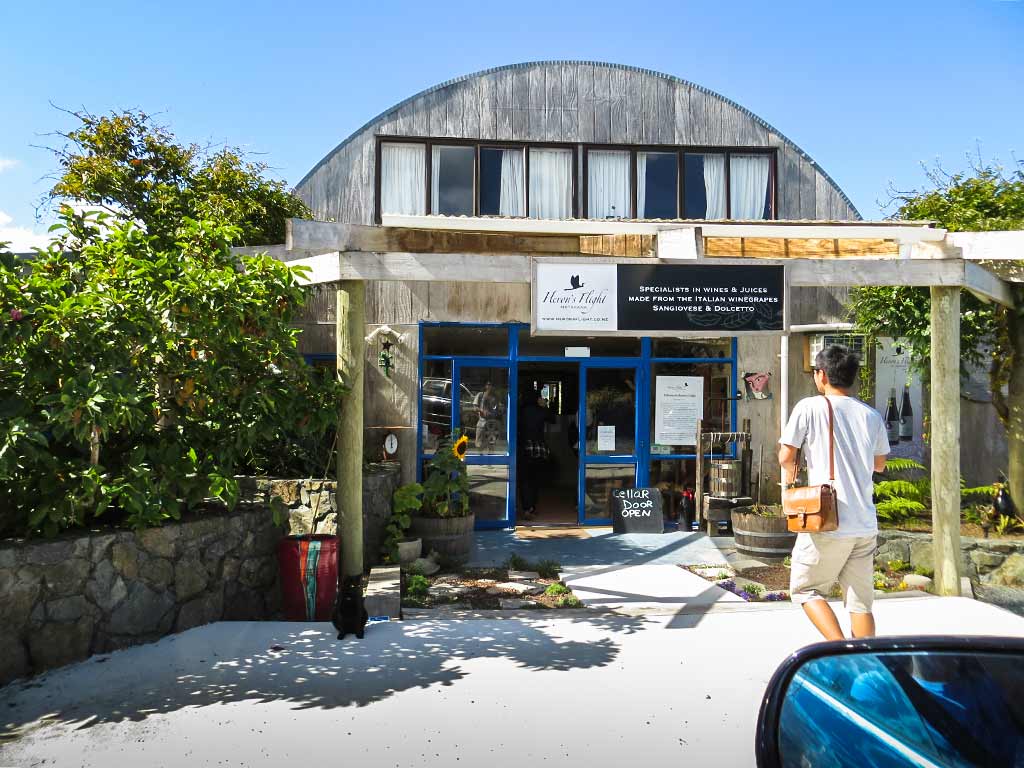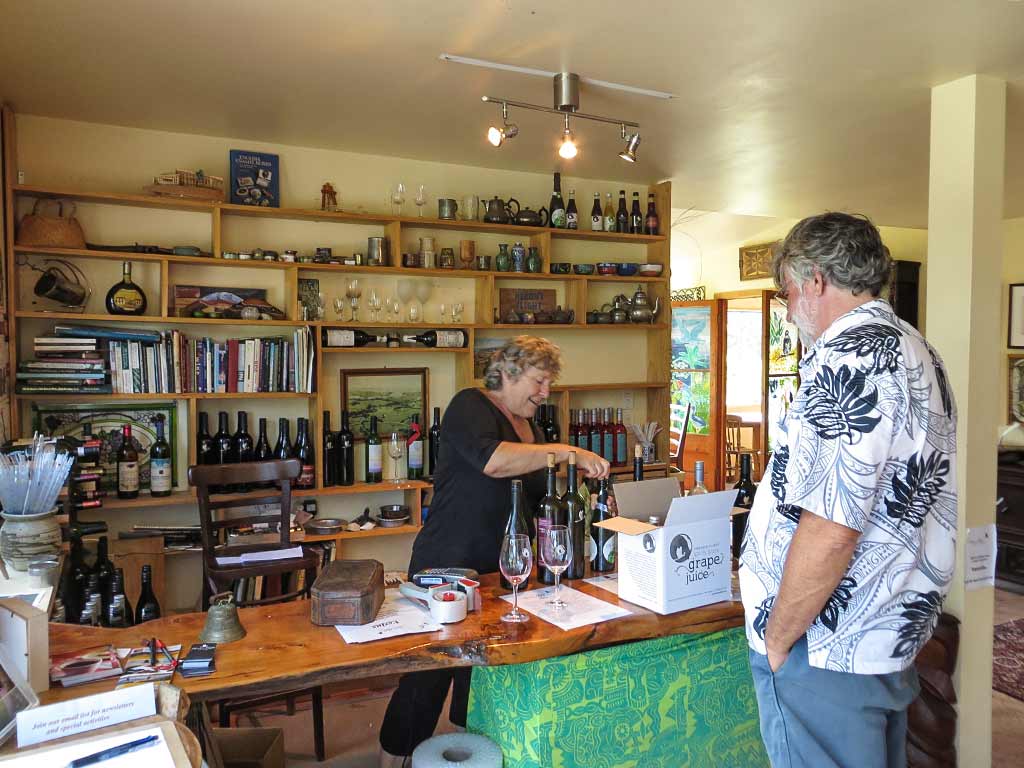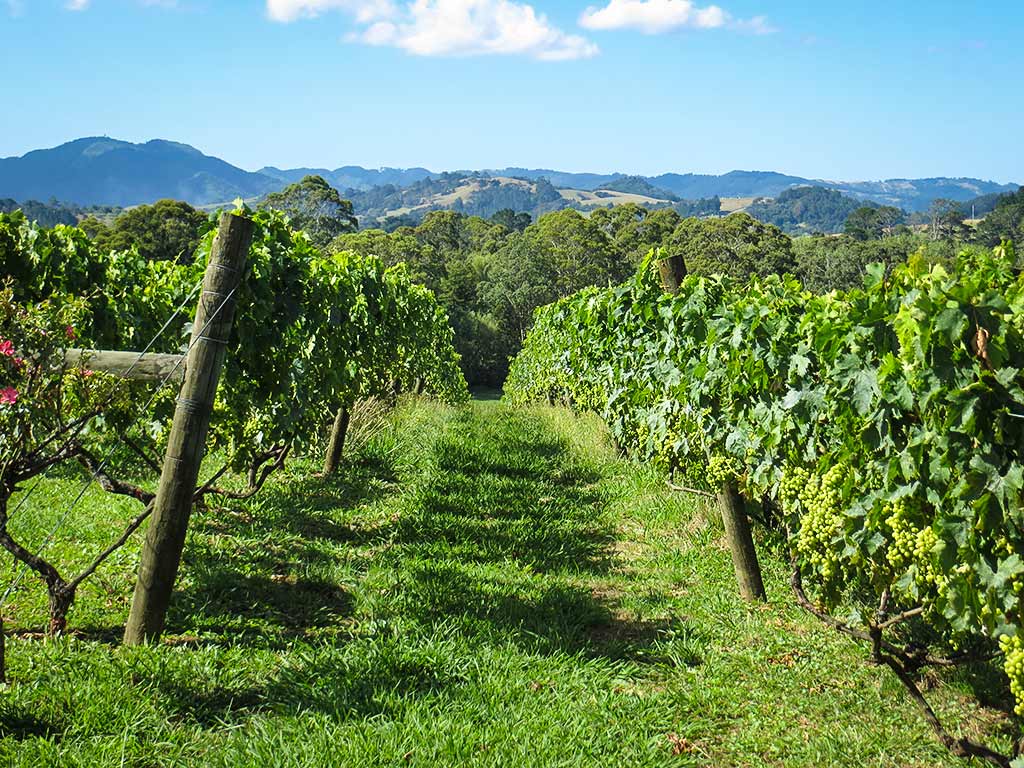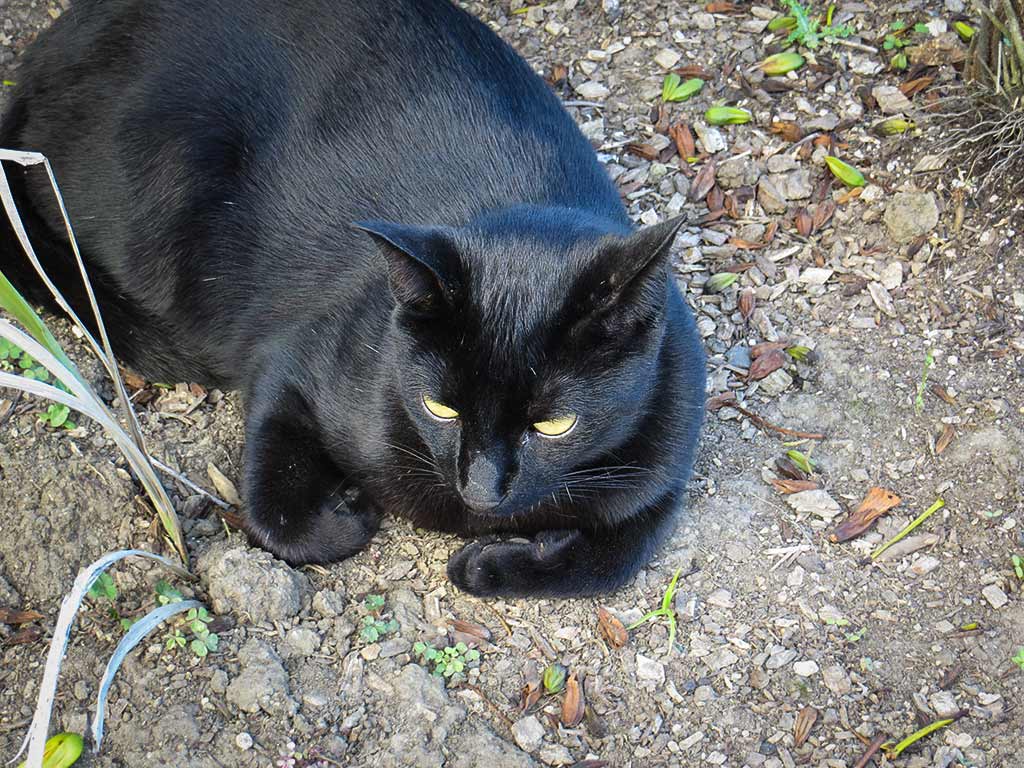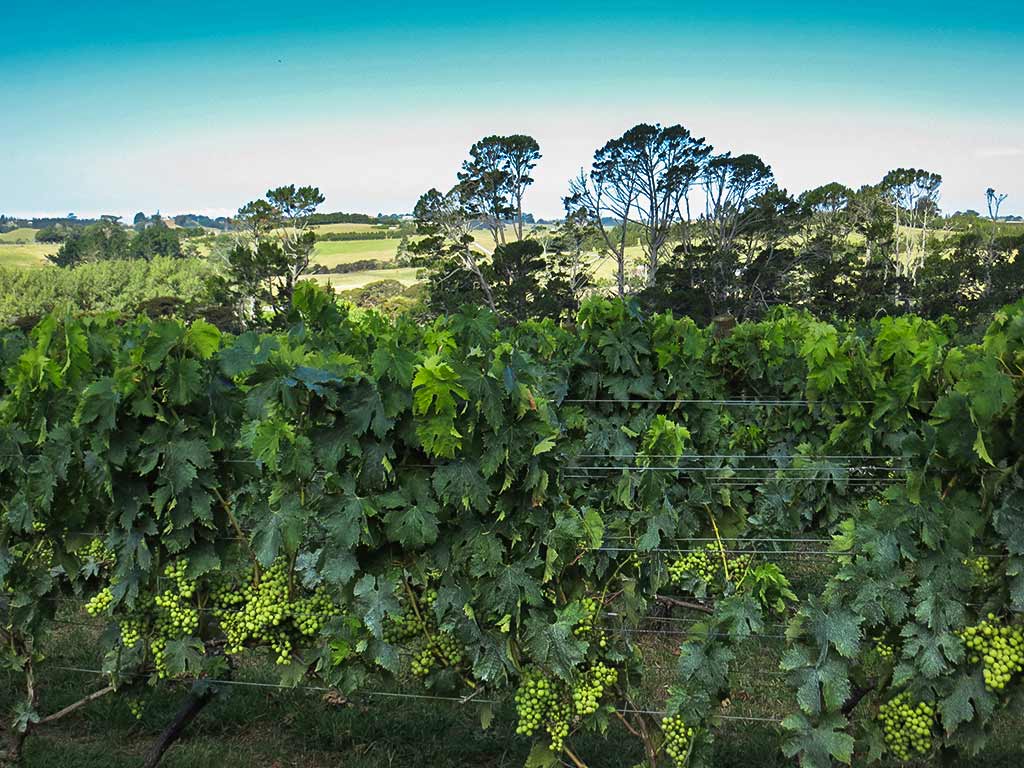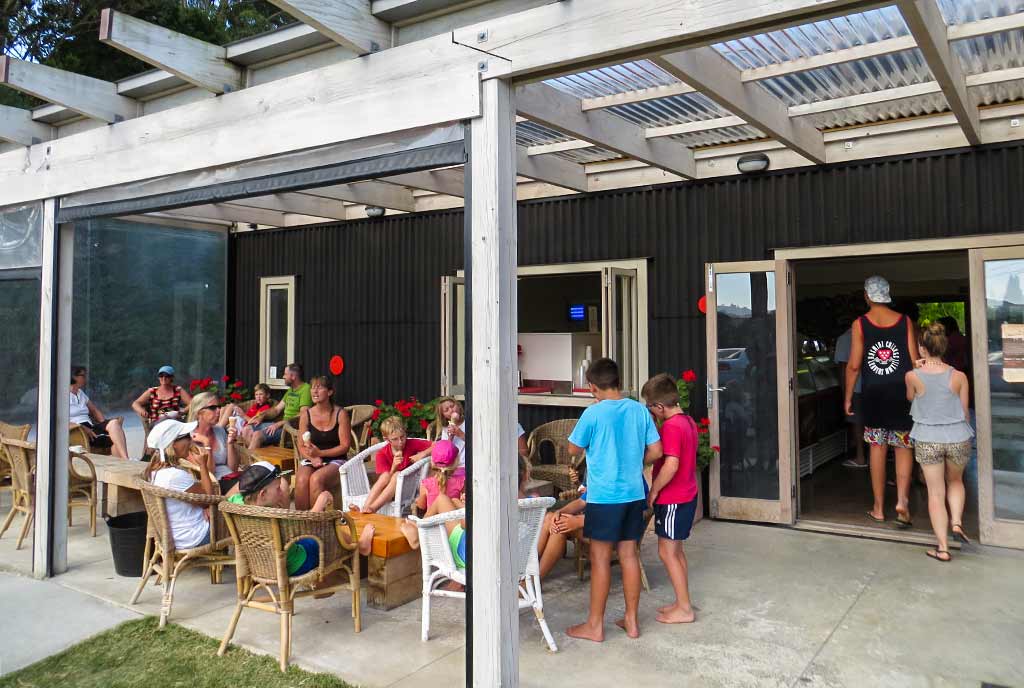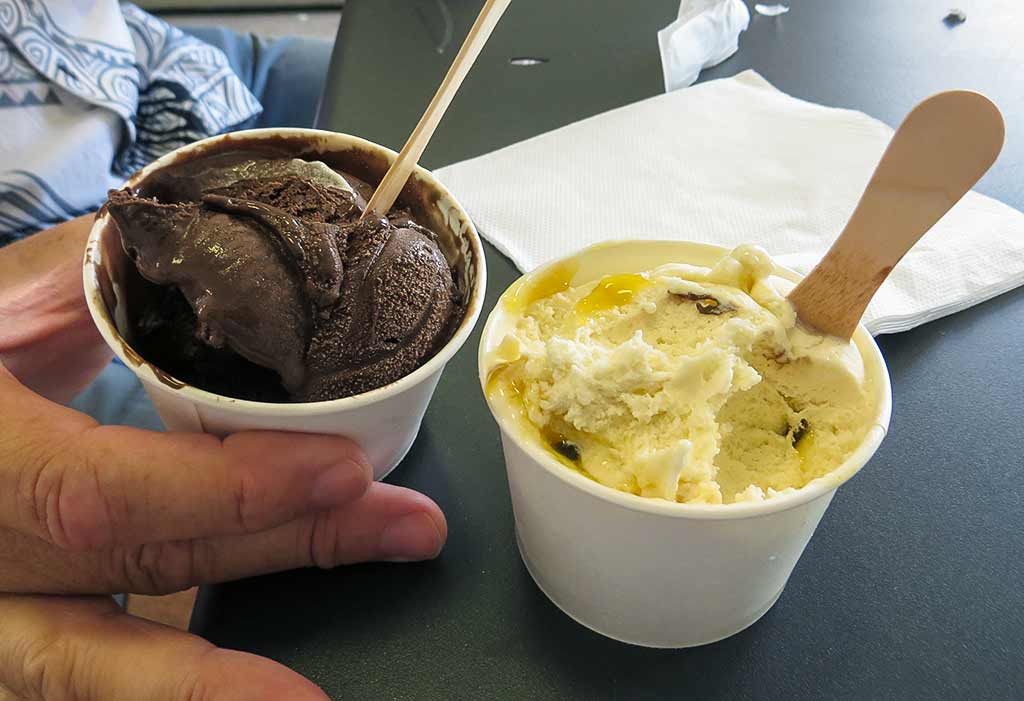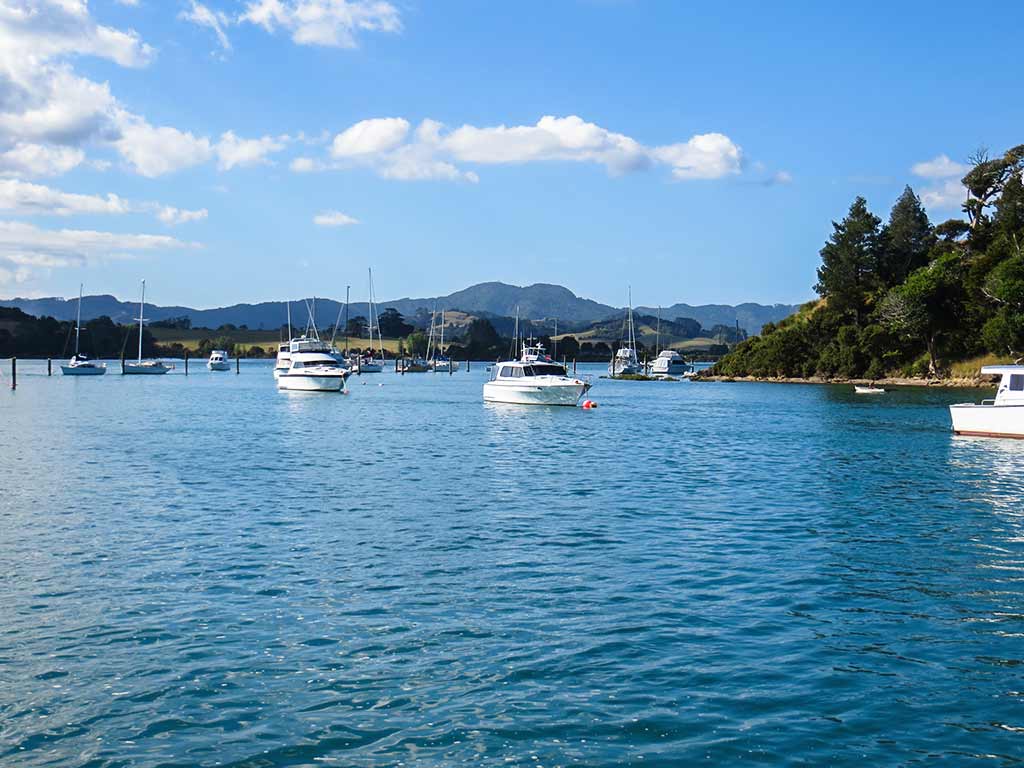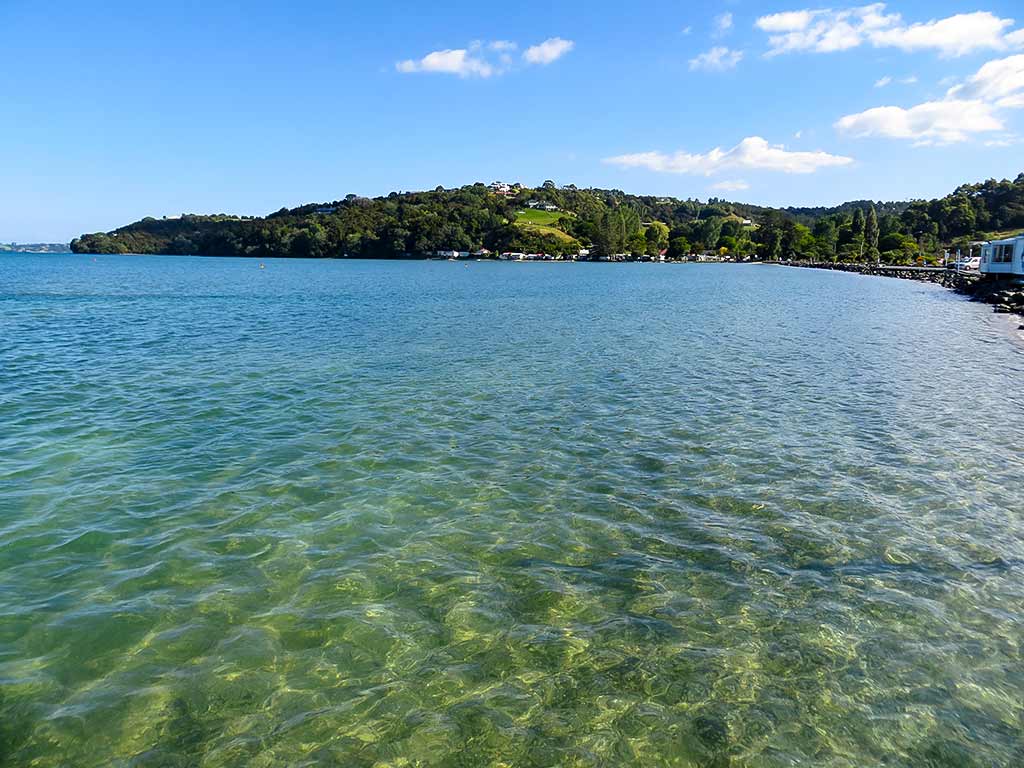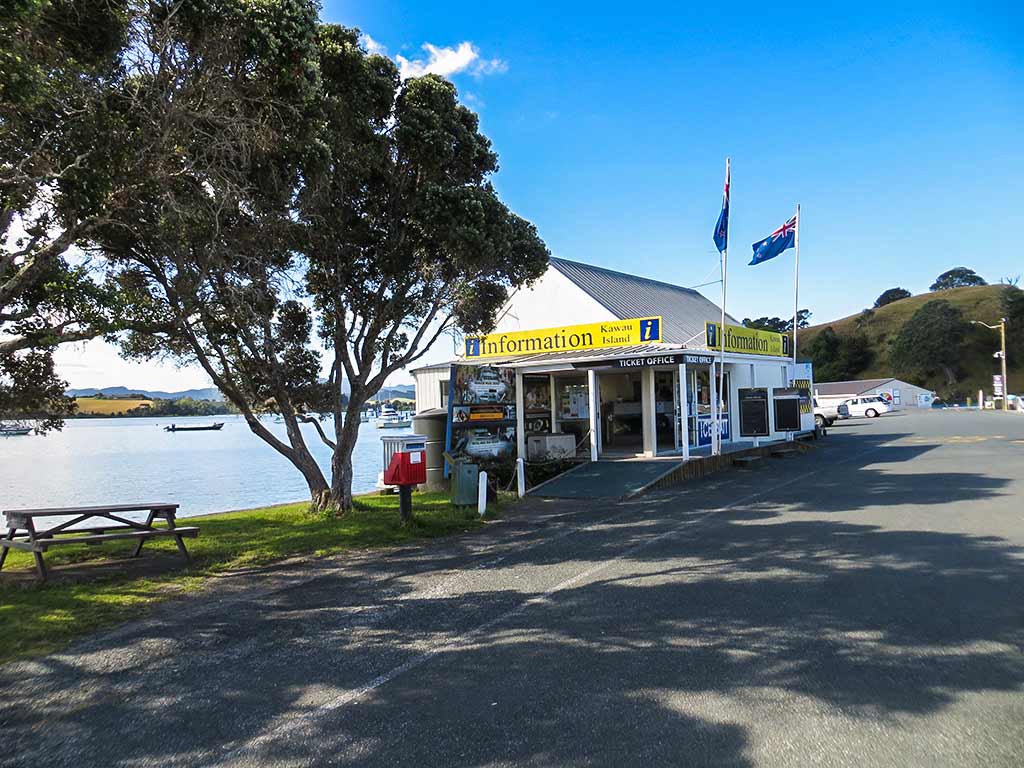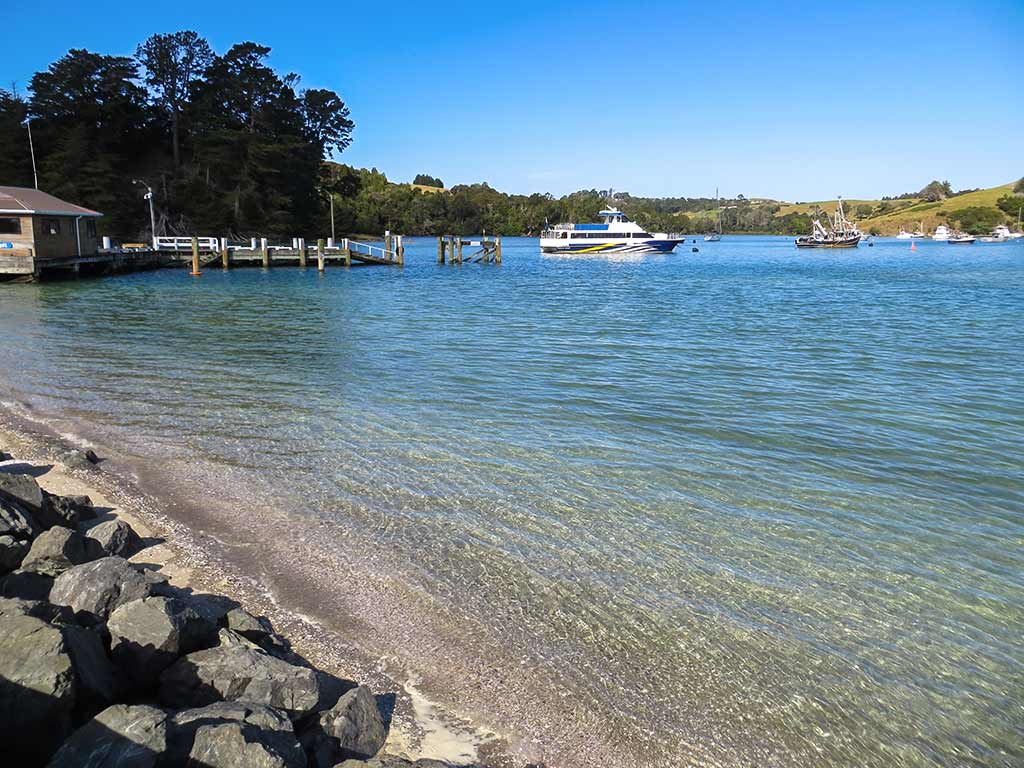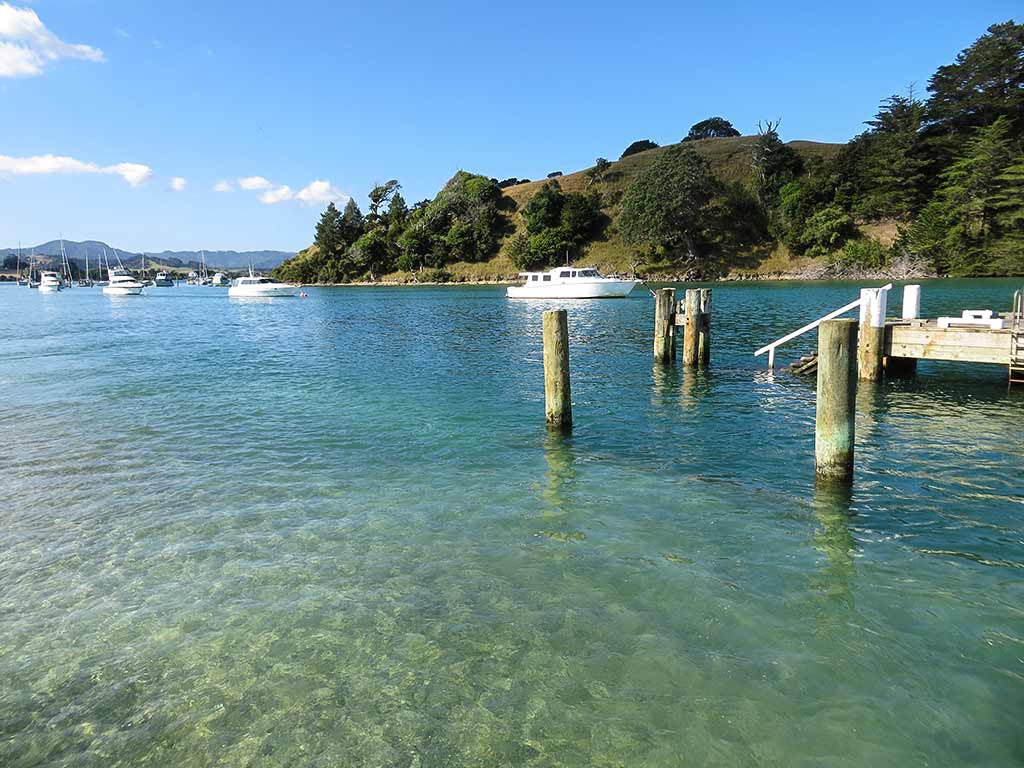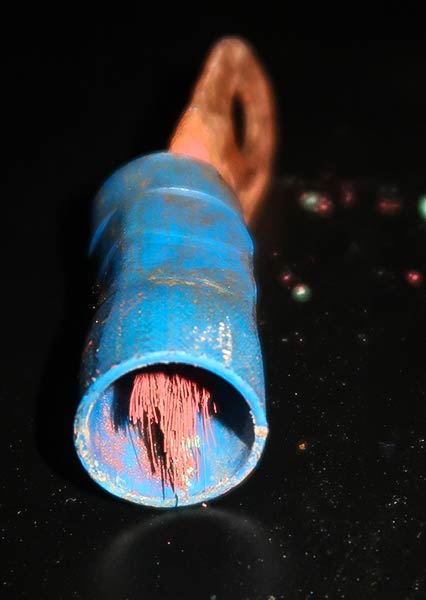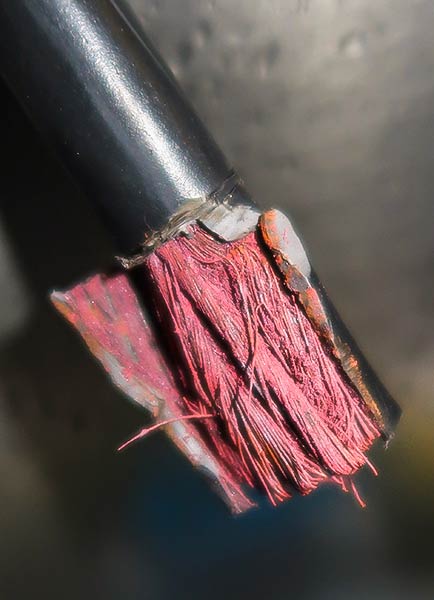January 29, 2014
Our next stop was a place called Snells Beach, a seaside suburban area. While the beach was nice in a low-key way, the suburb was dated and not particularly attractive. Nearby was another seaside area called Algies Bay. It didn’t have much in the way of a beach, but this protected bay was full of boat moorings and overall was prettier than Snells. In general, though, we wouldn’t call either one a must-do. Below, photos of Snells Beach and Algies Bay (click to enlarge and scroll).
Now, we headed down the long finger of a peninsula to Mahurangi Scenic Reserve, specifically a place called Scotts Landing. Through the trees, we started to glimpse views of the area as we drove down the road, and not surprisingly, it was really beautiful. This harbor is filled with peninsulas and inlets, peaceful bays, forested headlands and green pastures. Since the waters are very protected, there are lots of boats on moorings, but the numerous shallow areas keep this harbor from being overrun with them.
After parking near a pier and admiring the harbor, we walked to the area called Scotts Landing, a historic site with a restored homestead that was a boarding house in the 1800’s. The walk along the boardwalk was so pretty, and Scotts Landing was particularly magical and special. Huge trees lined a stony beach, grassy lawn areas surrounded the old homestead, and just offshore sat an island, so close that a person could walk out to it at low tide. This unusual combination of attributes gave the place a dreamlike, surreal feeling, and the warm early evening sun added to the effect.
We walked by a small group picnicking on the beach with champagne, grilling something that smelled wonderful, and I felt a little envious of the happy gathering taking place in such an incredible setting. It’s funny: the objective of this outing was for me to see this area so we didn’t have to try to do it by boat, but that wasn’t the way it was working out. This area was so pretty that I was actually getting more interested in bringing the boat here, and even Rich was feeling intrigued.
The sun was getting lower in the sky, and we still had a couple more stops to make so we pulled ourselves away from Scotts Landing. As we drove up the peninsula, we spotted a kakariki, a small green and red parrot, perched on a tree near the side of the road. We stopped and it flew off before I could get back to it, but I did see two rosellas, wildly colorful parrots native to Australia that have ended up in New Zealand. All this gorgeous scenery and parrots, too!
Next up, more Matakana magic. –Cyndi

